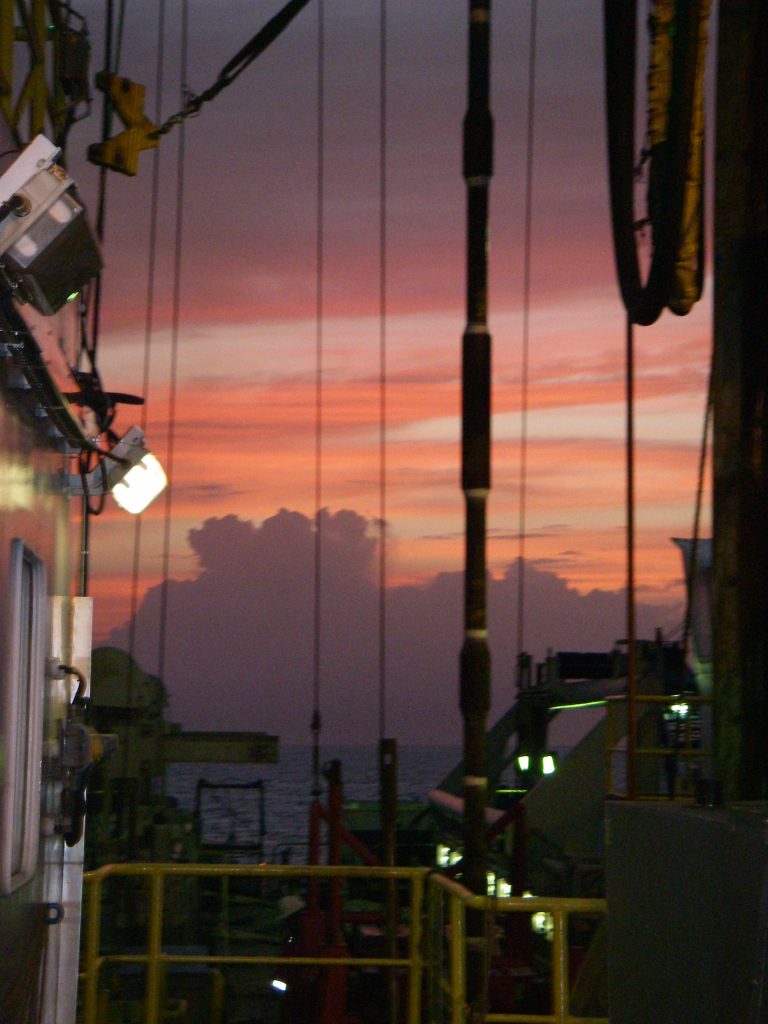
What Are The Cores Revealing: Week 2 Science
The main objective of our core sampling was to characterize the eruptive history of Montserrat back to the early beginnings of this island (~2.6 million years ago), based on the marine sediments and tephra (pyroclastic deposits from explosive volcanism) layers cored at this site. During week 2 of Expedition 340 we finished our drilling operations around the island of Montserrat. A total of 8 holes were cored and over 120 cores recovered. The deepest cores were obtained from ~245 meters below the seafloor. The following are science results as summarized by 340 Staff Scientist, Nicole Stroncik.
Generally, the material retrieved at both sites U1394 and U1395 consists of various combinations of hemipelagic muds, volcaniclastic turbidites of varying grain sizes and muds, and volcanic tephra. The background sediment mainly consists of fine-grained calcareous biogenic fragments (corals, shells, sponge spicules and critter skeletons) and siliciclastic sediment of pale yellowish gray to dark gray color, varying in grain size from fine silt to fine mud. The turbiditic units generally consist of a mixture of volcaniclastic and bioclastic material. Volcaniclasts include fragments of fresh andesitic lava, altered lava, and crystals (feldspar, amphibole, etc.). Bioclasts include fragments of carbonate materials such as corals and shells.
At Site U1396 we recovered a full record of hemipelagic sediments with intercalated tephra layers down to a total depth of 139 meters below seafloor. The hemipelagic sediments consist of a mixture of mainly carbonates and volcaniclastic particles. The tephra layers consist of mainly ash and pumice. Based on the bio-stratigraphic and magneto-stratigraphic studies done on the sampled material the deepest sediments cored at this site date as far back as 4.5 Million Years Ago (My). Most exciting is that with the large number of tephra layers retrieved within the cores it will be possible for the first time to completely reconstruct the geochemical evolution and the eruptive history of Montserrat, achieving all of the scientific objectives for this site.


